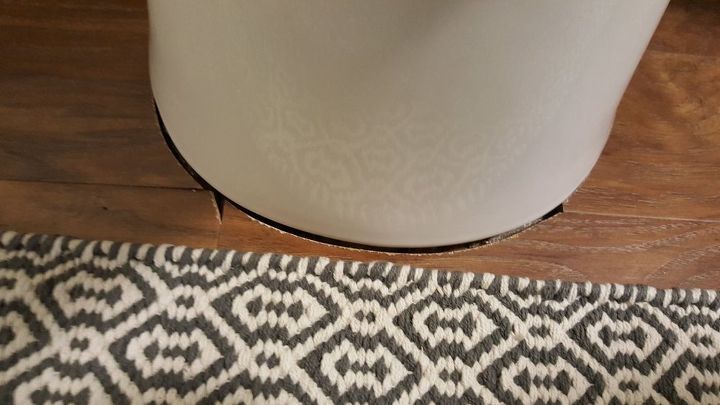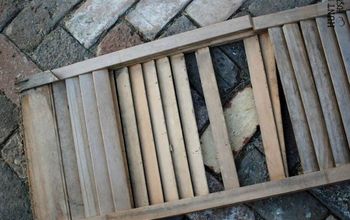How to find drafts?

My home was built in 1958 and I still have the original hardwood floors. I've been here for 20 years and dread every winter because the living room is extremely drafty. I have replaced the windows, caulked around the window frame as well as the door but still dealing with the draft.
Replace the frame or flooring?
Related Discussions
How to get rid of mice?
We seem to have some unwelcome Mickeys and Minnies in our house. What is the best way to get rid of them?
How to remove popcorn ceiling with asbestos?
I want to remove my popcorn ceiling, but it has asbestos in it. How do I go about this safely?
How to caulk baseboard gaps?
How do I fill gaps at baseboard, should I caulk? If so, does anyone know how to caulk baseboards?
How to fix squeaky hardwood floors?
How do I fix squeaky hardwood floors?
Tile backsplash when there is existing countertop backsplash
We are thinking about how to add a backsplash to our kitchen. Unfortunately when we had our countertops installed we ordered a small backsplash that comes part way up... See more
Contractor mis-cut the floor when he put in the toilet
Hello, Our contractor didn't "measure twice, cut once" when he put in our toilet. Check out the photo. I'd appreciate any suggestions on a fix or a way to hide this m... See more






Assuming you are on the first floor, could you insulate your floors from the cellar? Seems like a much cheaper alternative to replacing beautiful, real hardwood floors.
You might check your electric outlets, they often are open to the outdoor wall with no insulation. They can be fixed with small attachments to close off the drafts that come through them. They are easy to install by removing the cover plates and put in the insulation piece and replace the cover plates, that easy. It is not expensive and not difficult to fix. Also, check around your appliances, wallboards on the floors, and even lacking insulation in such an old home. You may need insulation added in the walls. They blow it in from the outside into the walls. Many old homes were not insulated well or it disintegrates over time, being less quality than we have now. Some only used shredded papers in that day. Lack of wall or ceiling insulation can cause the cold to come right through the walls. One thing today we enjoy is floor insulation. If you have a crawl space, you might want to think about someone putting down some insulation under the floor. We have it and it is such a blessing. Finally, consider area rugs for where you sit and even the new electric fireplaces like at Montgomery Ward that use the same amount of electricity as a toaster but they heat the whole room. These are things we found helpful when we bought a house built in the 1890's and it was in a cold northern state. Hope some of these ideas help. Good luck Kimberly!
There could be several places causing a draft. The biggest is a fireplace. Warm air escapes up the chimney pulling much of your heat outside. If you have a fireplace, have a professional Chimney Sweep inspect it. You may need to add glass doors on the firebox to close it off. Another problem could be the insulation in your attic has compacted and is not doing it's job of keeping heat in. Having additional insulation sprayed into your attic is very cost effective, plus your contractor will inspect your roof and rafters and alert you to any problems. It usually only takes a few hours to complete the job. Also some electric companies have programs where they will send someone out with a thermal imaging camera to identify areas where heat is escaping, so you know exactly where improvements are needed. Check their website for assistance.
Normally, in the old days, you'd light a match and see which way the flame travels. Nowadays, stick a shred of Kleenex on a stick of some kind. Where the tissue blows, you've got a draft. Don't know how your home was built, but the floor may have gaps in it allowing for air to pass. If you have a chimney, the flue may have a bad seal. Once you find where the air is coming from (and going to), then you can decide the method to fix the issue. It may be a simple vapor barrier around the foundation or below the floor. Remember cold air stays down and warm air rises. But if there is a way for the air to move even warm air will feel cold against the skin.
get a good quality carpet pad and carpet, did you check the base boards for gaps? do you know if you have any insulation in your outer walls? back in the day "dead air space" was considered to be insulation. to find the air leaks, light a candle - the flame will flicker when air hits it. caulk that area. I don't know if its still available, but the bob villa web site had a guide to what to caulk to keep the air leaks down. my place was originally heated with wood burning stove and a furnace, the stove went out to the dump. if you are in a certain age frame, you may qualify for energy assistance, and a team may come to your house to weather seal it.
You can seal the floor from underneath. We are in process of doing that with a product called Reflectix. It looks like bubble wrap with silver backing on both sides. You put it between the floor joists underneath the flooring then add a second layer at edge of the floor joist. We felt a big difference as soon as we got one room done. Here is a link, check out the crawl space video. I ordered mine from lowes.com and had it shipped to the house.
https://www.reflectixinc.com/
Check your wall outlets, for air leaks. You can install switchplate covers and outlet covers made of insulating foam that are placed behind your covers to seal off drafts.
Check cold air returns. You may need to go into your basement when furnace is running. Carefully move your hand along the ductwork, on all sides. If you feel heat escaping, you'll need to clean the metal ducts with Clorox green Works or similar, to remove old dirt and dust. When dry, place "Mastic Tape" (not Duct tape or any other type of tape) over every seam area where you noticed heat escaping. This also comes as a "paint", specifically for duct work. You paint in on the seams, to seal escaping heat.
Check the "sill plate" area in your basement. If cold air is found, seal along the sill plate (where concrete block and wood intersect, at top area of basement walls), using an appropriate caulking material ( as recommended by your harware store personnel, with experience in this matter).
Your doors may need more weatherstripping, or new door sweeps to seal out cold air. If your windows still leak cold air, I strongly recommend purchasing or making insulated draperies that have numerous fold and go from floor to ceiling. You can purchase fabric for this purpose at JoAnne fabric. You'll want a good material, capable of sealing out cold air. You'll find many good videos, online. The best insulation comes from lined draperies that are 2.5-3x the width of the drapery rod, plus returns. Shrink the (washable) fabrics before sewing, if you plan on washing them, in the future.